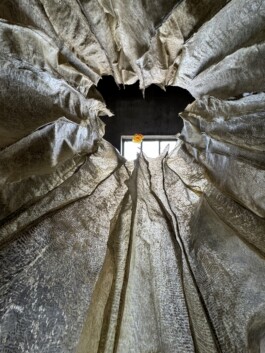
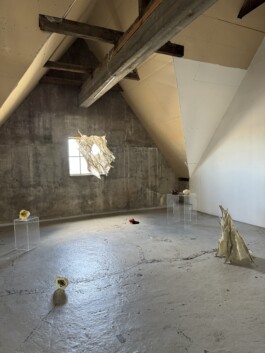
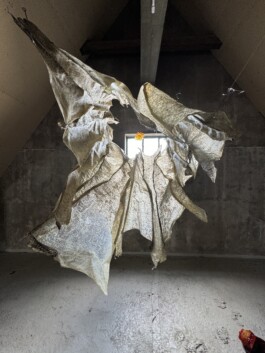
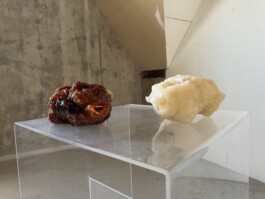
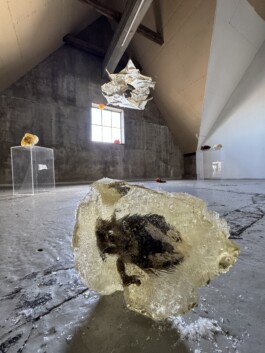
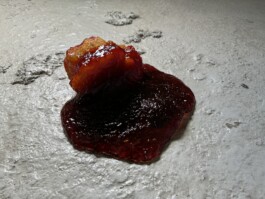
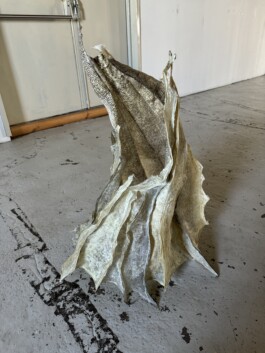
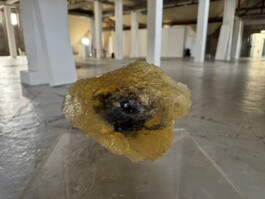
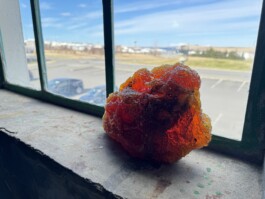
This installation consists of fish leather sculptures and sugar objects. Created in Reykjavík, Iceland, the work stems from the artist’s research into the prehistory of the island—an unusual pursuit, given that Iceland’s documented history begins in the 9th century and is often said to have no prehistory.
Not adhering strictly to historical facts, the artist imagined an alternate narrative in which the oldest traces of humanity were discovered on the island. Influenced by hydrofeminist thinker Astrida Neimanis, who encourages us to consider our bodies as "bodies of water", the artist envisioned porous and fluid beings migrating across continents and seas, eventually arriving at the most remote islands.
The artist is particularly interested in how fiction and reality intertwine to create new possibilities. This theme, deeply rooted in Icelandic culture and folklore, served as a guiding thread in developing the work. Drawing from these connections, the artist constructed a personal and imaginative version of reality.
As part of the process, the artist learned one of Iceland’s oldest crafts: tanning fish leather. Archaeological discoveries from the time of the first settlers include garments and accessories made from fish leather—such as shoes, belts, and bags. Today, this material is being revisited as a sustainable way to repurpose by-products of the fishing industry.
In developing the sculptural forms, the artist was inspired by the legend of the Lagarfljotsormurinn – water, lake snake—a mythical water creature said to inhabit a lake in Iceland. While abstract in form, the sculptures subtly reference such legends and remain open to a range of interpretations.
A second element of the installation includes sugar sculptures cast from lava stone molds. The artist explored sugar’s material properties—its constant transformation under environmental influences like heat and humidity. Within the sugar pieces, vague silhouettes of imagined sea creatures appear, reflecting the ongoing dialogue between reality and fiction that defines the work.
© Laima Kulbytė